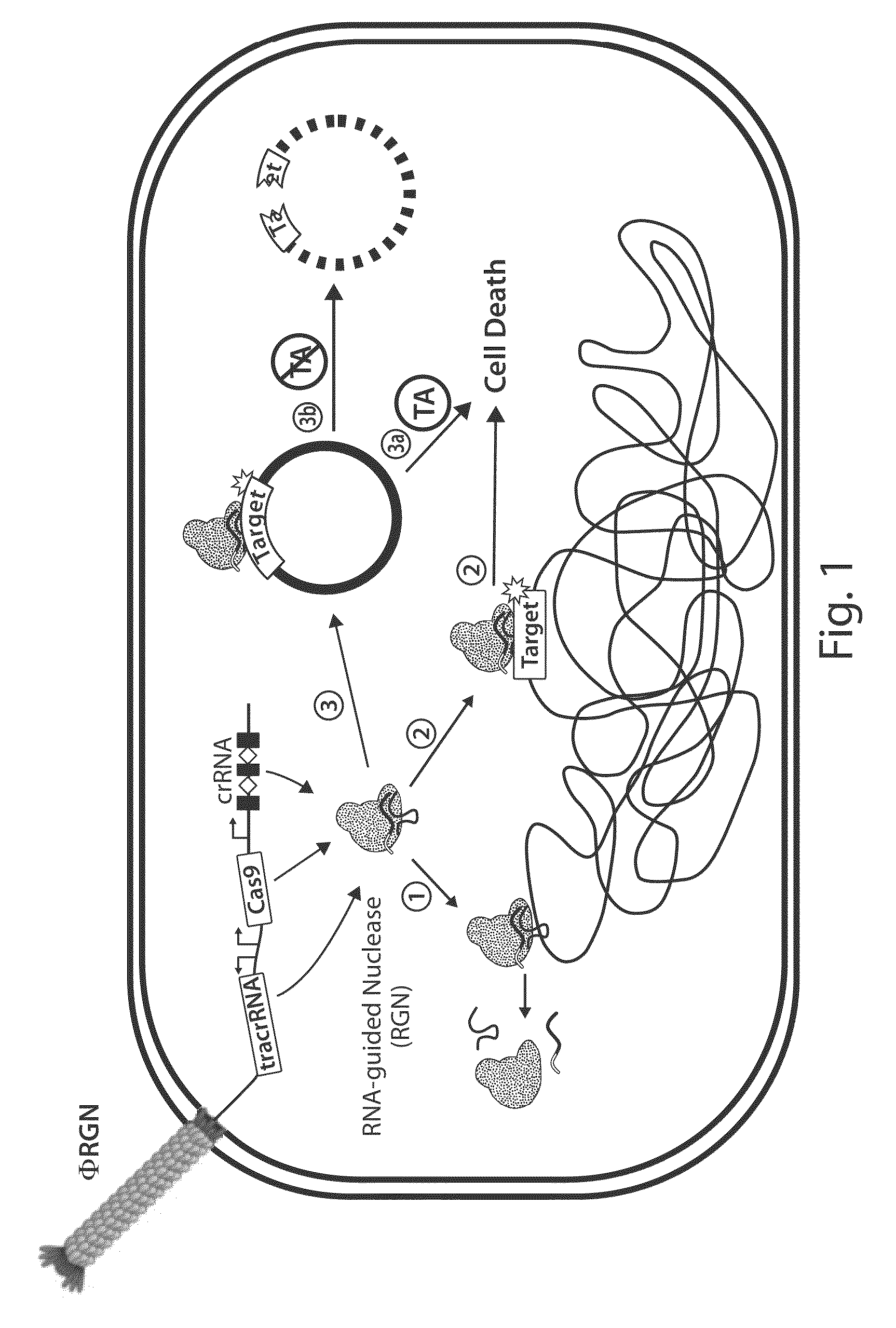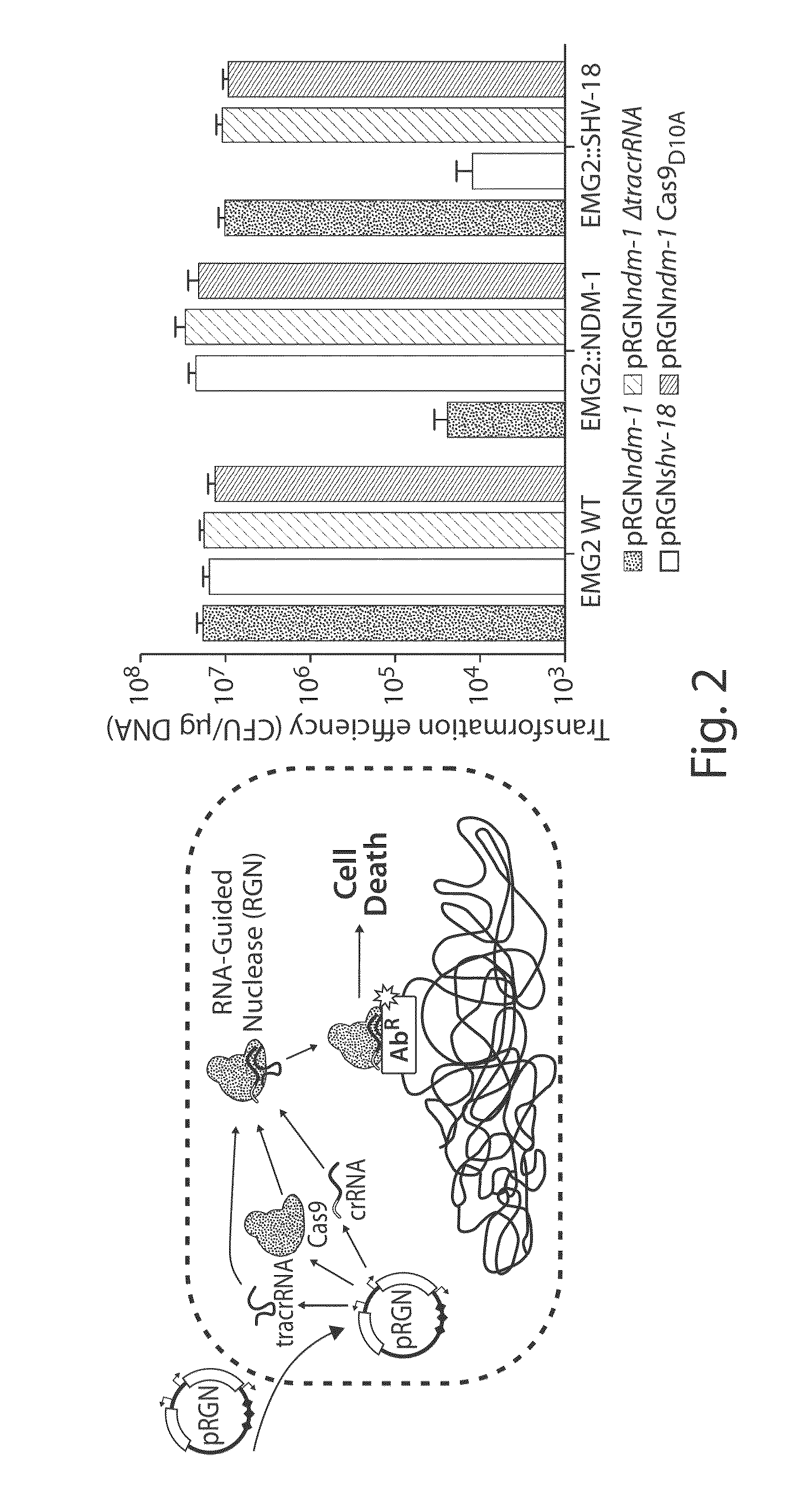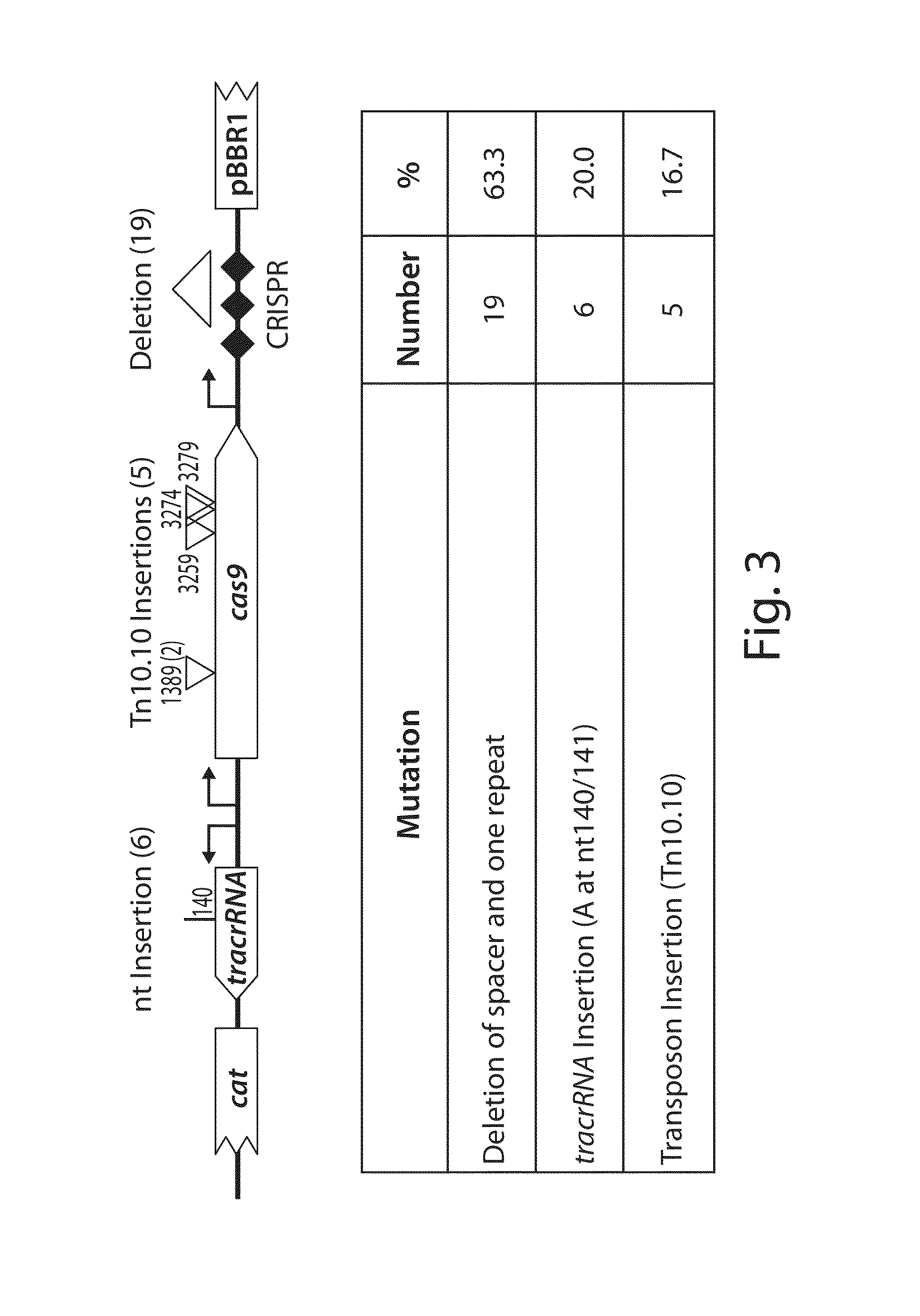Tuning microbial populations with programmable nucleases
a technology of microbial populations and nucleases, applied in the field of microbial populations with programmable nucleases, can solve the problems of not being useful in combating, unable to directly target existing and emerging virulence factors or antibiotic resistance genes, and unable to efficiently and rapidly encode synthetic constructs. , to achieve the effect of broad delivery and dissemination, efficient and rapid encoded constructs
- Summary
- Abstract
- Description
- Claims
- Application Information
AI Technical Summary
Benefits of technology
Problems solved by technology
Method used
Image
Examples
example 1
RNA-Guided Nucleases Mediate Sequence-Specific Cellular Cytotoxicity
[0172]To establish RNA-guided nuclease (RGN) functionality in mediating sequence-specific cytotoxicity, programmable nuclease circuits were designed to induce double-stranded breaks in blaSHV-18 or blaNDM-1, which encode extended spectrum and pan-resistance to β-lactam antibiotics, respectively (Table 1) (Rasheed, J. K. et al. Antimicrob. Agents Chemother. 44, 2382-8 (2000); Rasheed, J. K et al. Emerg. Infect. Dis. 19, 870-8 (2013)). Transformation of plasmid-borne RGNs (pRGNs) into E. coli containing a chromosomal copy of these target genes resulted in nearly a thousand-fold decrease in transformation efficiency as compared to wild-type cells lacking the target (FIG. 2). Transformation efficiency was calculated using the following formula:
TransformationEfficiency=cfu / mLμgDNAtransformed
FIG. 20A illustrates a vector map of an example of a programmable nuclease circuit targeting the beta-lactamase gene, blaNDM-1. Thes...
example 2
RNA-Guided Nucleases are Effective against High-Copy-Number Plasmids
[0175]Antibiotic resistance genes, such as blaSHV-18 and blaNDM-1, often reside on large, multi-copy plasmids capable of autonomous transfer in microbial populations, leading to horizontal dissemination of drug resistance (Nordmann, P. et al. Trends Mol. Med. 18, 263-72 (2012)). RGN activity against high-copy plasmids was verified with a GFP-expressing, ColE1-derived vector containing a standard β-lactamase selectable marker (pZE-blaZ-gfp) (Lutz, R. & Bujard, H. Nucleic Acids Res. 25, 1203-10 (1997)) or blaNDM-1 (pZE-blaNDM-1-gfp). Vectors bearing this ColE1 origin are present at copy numbers of 50-70 per cell (Lutz, R. & Bujard, H., 1997). Transformation of pRGNndm-1, a plasmid-borne RGN targeting blaNDM-1, into cells containing pZE-blaNDM-1-gfp led to a three-log reduction in carbenicillin-resistant transformants, whereas transformation of pRGNndm-1 into cells containing target-free pZE-blaZ-gfp did not lead to an...
example 3
RNA-Guided Nucleases are Delivered with High Efficiency to Bacterial Cells
[0177]The viability of programmable nuclease circuits as an antimicrobial therapy hinges, in some instances, on high-efficiency delivery of genetic constructs to bacterial cells. Bacteriophages are natural predators of prokaryotes and are highly adept at injecting DNA into host cells. To use phage particles for programmable nuclease circuit delivery, phagemid vectors were engineered by pairing the blaNDM-1 or blaSHV-18 RGN constructs with an f1 origin for packaging into M13 particles. Phage-packaged RGNndm-1 (“ΦRGNndm-1”) was capable of comprehensively transducing a population of E. coli EMG2 (FIG. 6). Treatment of EMG2 housing native plasmids conjugated from clinical isolates containing blaNDM-1 (pNDM-1) or blaSHV-18 (pSHV-18) with the cognate ΦRGNs resulted in 2-3-log reductions in viable cells even in the absence of any selection (FIG. 7). Furthermore, programmable nuclease circuits engendered no toxicity a...
PUM
| Property | Measurement | Unit |
|---|---|---|
| Electrical conductance | aaaaa | aaaaa |
| Electrical resistance | aaaaa | aaaaa |
Abstract
Description
Claims
Application Information
 Login to View More
Login to View More - R&D
- Intellectual Property
- Life Sciences
- Materials
- Tech Scout
- Unparalleled Data Quality
- Higher Quality Content
- 60% Fewer Hallucinations
Browse by: Latest US Patents, China's latest patents, Technical Efficacy Thesaurus, Application Domain, Technology Topic, Popular Technical Reports.
© 2025 PatSnap. All rights reserved.Legal|Privacy policy|Modern Slavery Act Transparency Statement|Sitemap|About US| Contact US: help@patsnap.com



